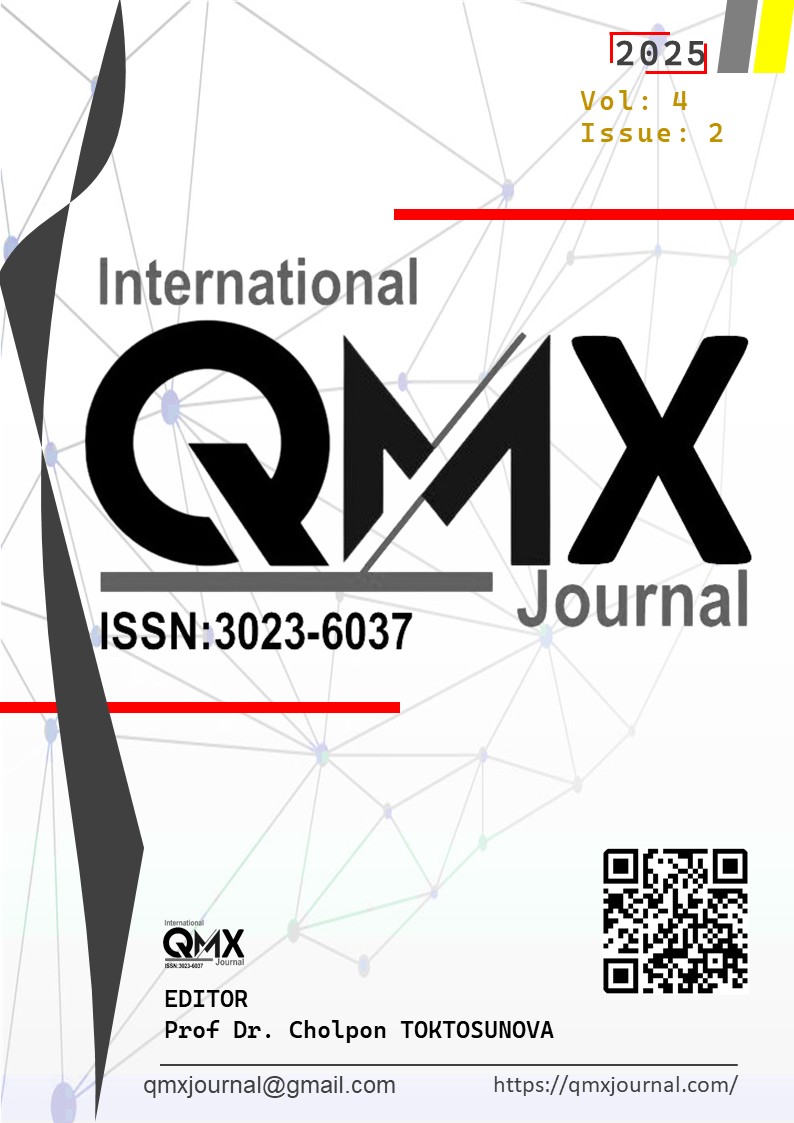Author :
Abstract
Bu çalışmada öğretmenler arası iş birliğinin iş tatminine etkisinin incelenmesi amaçlanmıştır. Araştırma, ilişkisel tarama modeliyle gerçekleştirilmiştir. Araştırma sonucuna göre; cinsiyete göre incelemede, kadınların rehberlik servisi paydaş iş birliği toplam puan algısı erkeklerden fazla çıkmıştır. medeni duruma göre incelemede; okul iş birliği ve iş tatmini ölçekleri ve alt boyutlarında bekarların iş birliği ve iş tatmini algıları evlilerden daha yüksek çıkmıştır. Yaş gruplarına göre incelemede; okul iş birliği ve iş tatmini ölçekleri ve alt boyutlarında yaş gruplarına göre istatistiksel olarak herhangi bir farklılık çıkmamıştır. Hizmet yılı gruplarına göre incelemede; öğretmen meslektaş iş birliği boyutunda 11-15 yıl arası mesleki kıdemi olan öğretmenlerin öğretmen meslektaş iş birliği algısı 6-10 yıl arası ve 16 yıl ve üzeri mesleki kıdemi olan öğretmenlerden daha fazla çıkmıştır. Veli öğretmen iş birliği boyutunda 11-15 yıl arası mesleki kıdemi olan öğretmenlerin veli öğretmen iş birliği algısı 1-5 yıl arası ve 16 yıl ve üzeri mesleki kıdemi olan öğretmenlerden daha fazla çıkmıştır. Okul iş birliği genel boyutunda 11-15 yıl arası mesleki kıdemi olan öğretmenlerin okul iş birliği genel algısı 16 yıl ve üzeri mesleki kıdemi olan öğretmenlerden daha fazla çıkmıştır. Katılımcıların iş tatmini genel boyutunda 6-10 yıl arası mesleki kıdemi olan öğretmenlerin iş tatmini genel algısı 11-15 yıl ve 16 yıl ve üzeri mesleki kıdemi olan öğretmenlerden daha fazla çıkmıştır. Okul kademesi gruplarına göre incelemede; müdür paydaş iş birliği ve veli öğretmen iş birliği alt boyutları ile okul iş birliği genel ölçeğinde ilkokullarda görev yapan öğretmenlerin müdür paydaş iş birliği ve veli öğretmen iş birliği ile okul iş birliği genel algıları liselerde görev yapan öğretmenlerden daha yüksek çıkmıştır. Son olarak katılımcıların okul iş birliği toplam puanları ile iş tatmini toplam puanları algıları arasında orta düzeyde, anlamlı ve pozitif bir ilişki çıkmıştır. Buna göre katılımcıların okul iş birliği alt boyut toplam puanlarının iş tatmini toplam puan algılarını anlamlı bir şekilde yordamaktadır. Diğer bir ifade ile katılımcıların öğretmen meslektaş iş birliği alt boyutundaki 100 birimlik artışın iş tatmini davranışını % 21,1 artırmaktadır. Ayrıca katılımcıların rehberlik servisi paydaş iş birliği alt boyutundaki 100 birimlik artışın iş tatmini davranışını % 14,1 artırmaktadır.
Keywords
Abstract
This study aimed to examine the effect of collaboration among teachers on job satisfaction. The research was conducted with a relational screening model. According to the research results; in the examination according to gender, women's perception of guidance service stakeholder collaboration total score was higher than men. In the examination according to marital status; in the school collaboration and job satisfaction scales and sub-dimensions, singles' perceptions of collaboration and job satisfaction were higher than marrieds. In the examination according to age groups; in the school collaboration and job satisfaction scales and sub-dimensions, no statistically significant difference was found according to age groups. In the examination according to service year groups; in the teacher-colleague collaboration dimension, teachers with 11-15 years of professional seniority had a higher perception of teacher-colleague collaboration than teachers with 6-10 years and 16 years and above. In the parent-teacher collaboration dimension, teachers with 11-15 years of professional seniority had a higher perception of parent-teacher collaboration than teachers with 1-5 years and 16 years and above. In the general dimension of school collaboration, teachers with 11-15 years of professional seniority had a higher general perception of school collaboration than teachers with 16 years of professional seniority and above. In the general dimension of job satisfaction of the participants, teachers with 6-10 years of professional seniority had a higher general perception of job satisfaction than teachers with 11-15 years and 16 years of professional seniority and above. In the examination according to school level groups; in the sub-dimensions of principal-stakeholder collaboration and parent-teacher collaboration and in the general scale of school collaboration, the general perceptions of principal-stakeholder collaboration and parent-teacher collaboration of teachers working in primary schools were higher than those of teachers working in high schools. Finally, a moderate, significant and positive relationship was found between the participants' total scores of school collaboration and their perceptions of job satisfaction. Accordingly, the participants' total scores of school collaboration sub-dimension significantly predicted their perceptions of job satisfaction. In other words, a 100-unit increase in the participants' teacher-colleague collaboration sub-dimension increases job satisfaction behavior by 21.1%. In addition, a 100-unit increase in the participants' guidance service stakeholder collaboration sub-dimension increases job satisfaction behavior by 14.1%.





